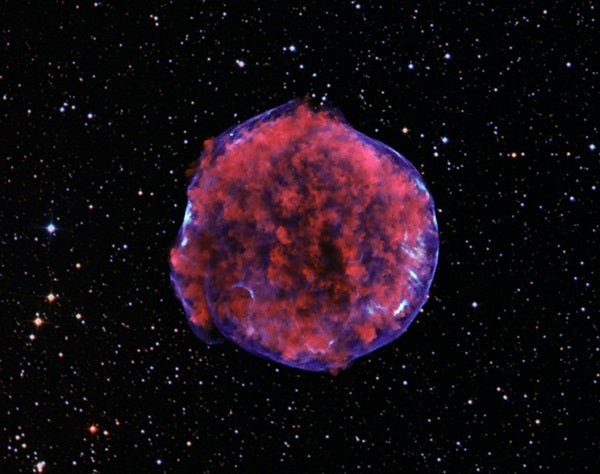Two different models explain the possible origin of type Ia supernovae, and different studies support each model. New evidence shows that both models are correct — some of these supernovae are created one way and some the other.
“Previous studies have produced conflicting results. The conflict disappears if both types of explosion are happening,” said Ryan Foley from the Harvard-Smithsonian Center for Astrophysics.
Type Ia supernovae are known to originate from white dwarfs — the dense cores of dead stars. White dwarfs are also called degenerate stars because they’re supported by quantum degeneracy pressure.
In the single-degenerate model for a supernova, a white dwarf gathers material from a companion star until it reaches a tipping point where a runaway nuclear reaction begins and the star explodes. In the double-degenerate model, two white dwarfs merge and explode. Single-degenerate systems should have gas from the companion star around the supernova, while the double-degenerate systems will lack that gas.
“Just like mineral water can be with or without gas, so can supernovae,” said Robert Kirshner from Harvard University.
Foley and his colleagues studied 23 type Ia supernovae to look for signatures of gas around the supernovae, which should be present only in single-degenerate systems. They found that the more powerful explosions tended to come from “gassy” systems, or systems with outflows of gas. However, only a fraction of supernovae show evidence for outflows. The remainder seems to come from double-degenerate systems.
“There are definitely two kinds of environments — with and without outflows of gas. Both are found around type Ia supernovae,” Foley said.
This finding has important implications for measurements of dark energy and the expanding universe. If two different mechanisms are at work in type Ia supernovae, then the two types must be considered separately when calculating cosmic distances and expansion rates.
“It’s like measuring the universe with a mix of yardsticks and meter sticks — you’ll get about the same answer, but not quite. To get an accurate answer, you need to separate the yardsticks from the meter sticks,” Foley said.
This study raises an interesting question: If two different mechanisms create type Ia supernovae, why are they homogeneous enough to serve as standard candles?
“How can supernovae coming from different systems look so similar? I don’t have the answer for that,” said Foley.
Read even more about type Ia supernovae and what these results mean for dark energy in the July issue of Astronomy, on newsstands June 5.










